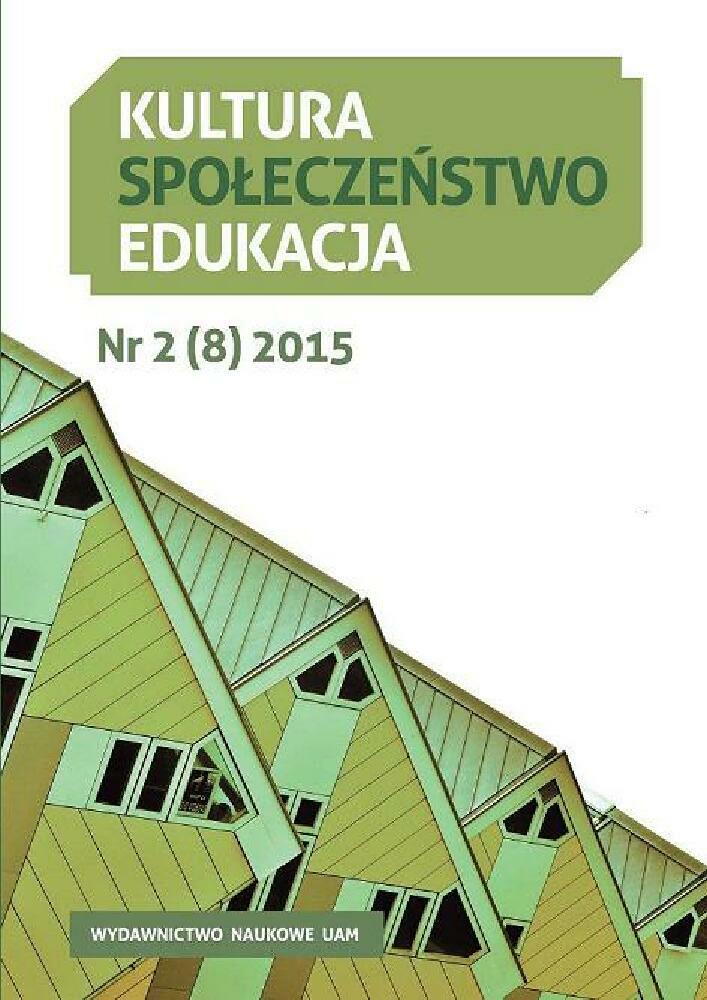Abstrakt
Contemporary aesthetic thought, especially that rooted in the pragmatist tradition and apologetic for the environmental experience, tends to situate form oriented aesthetics in juxtaposition to the concept of the aesthetic engagement. In particular the notion of disinterestedness is often brought to the forefront as connected to the concept of psychic distance and disdain for the surrounding reality. This essay attempts to revise two theories strongly promoting the importance of the physical form of the objects inspiring the aesthetic experience of the artist, namely that of Clive Bell and that of Maurice Merleau-Ponty, in order to respond to the aforementioned criticisms of formalism. In particular, the concept of the perception of the form as an end-in-itself rather than as a means to a heterogenous end is analyzed with reference to its engaging character.Bibliografia
Bell C. (1958). Art. New York.
Bell C. (2007). Hipoteza estetyczna, przeł. B.J. Obidzińska. „Sztuka i Filozofia” 31.
Berleant A. (2007). Prze-myśleć estetykę. Niepokorne eseje o estetyce i sztuce, przeł. M. Korusiewicz i T. Markiewka. Kraków.
Berleant A. (2012). Art, Nature, Environment. [W:] Aesthetics Beyond the Arts. New and Recent Essays. Farnham/Burlington.
Burke E. (1968). Dociekania filozoficzne o pochodzeniu naszych idei wzniosłości i piękna, przeł. P. Graff. Warszawa.
Crowther P. (2007). DefiningArt, Creating the Canon: Artistic Value in an Era o f Doubt. Oxford.
Dickie G. (1961). Bullough and the Concept o f Psychical Distance. “Philosophy and Phenomenological Research”, Vol. 22, No. 2 (Dec.).
Eliade M. (1966). Traktat o historii religii, przeł. J. Wierusz-Kowalski. Warszawa.
Eliade M. (1970). Sacrum, mit, historia, przeł. A. Tatarkiewicz. Warszawa.
Eliade M. (1994). Mity, sny, misteria, przeł. K. Kocjan. Warszawa.
Foster Ch. (2010). Bezinteresowność i pogarda a recepcja głównych myśli Arnolda Berleanta, przeł. M. Bańkowski. „Sztuka i Filozofia” 37.
Frazer J.G. (1965). Złota gałąź. Warszawa.
Heidegger M. (1997). Drogi lasu, przeł. J. Sidorek. Warszawa.
Heidegger M. (1999). Znaki drogi, przeł. K. Wolicki. Warszawa.
Levinas E. (1998). Całość i nieskończoność, przeł. M. Kowalska. Warszawa.
Merleau-Ponty M. (1996). Oko i umysł: szkice o malarstwie, przeł. S. Cichowicz. Gdańsk.
Merleau-Ponty M. (1999). Proza świata: eseje o mowie, przeł. E. Bieńkowska, S. Cichowicz, J. Skoczylas. Warszawa.
Otto R. (1999). Świętość, przeł. B. Kupis. Warszawa.
Welsch W (2005). Estetyka poza estetyką, przeł. K. Guczalska. Kraków.
Licencja
Prawa autorskie (c) 2016 Bogna J. Obidzińska

Utwór dostępny jest na licencji Creative Commons Uznanie autorstwa – Bez utworów zależnych 4.0 Międzynarodowe.
